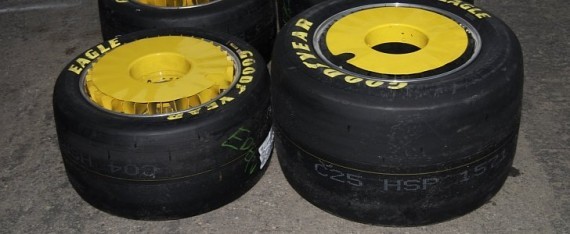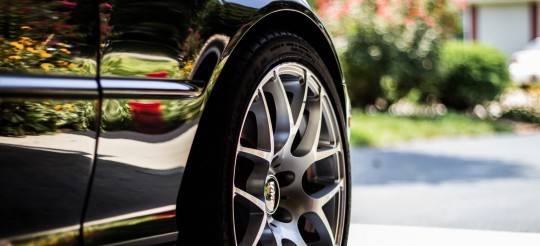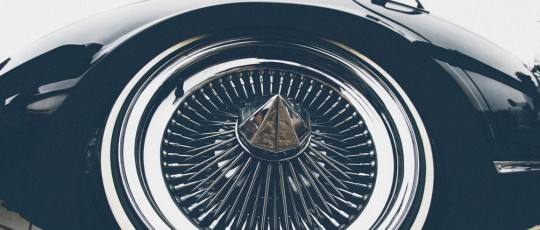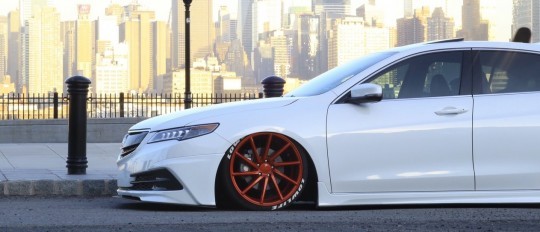 Tuning your car on a budget is a difficult thing to do, and not knowing where to start is surely a problem for some owners. We decided to go further on the topic of wheels and tires, two elements that have the potential of changing the way a car handles. In most cases, it might be the cheapest thing you can do to a vehicle except for removing interior components to make it lighter.
Tuning your car on a budget is a difficult thing to do, and not knowing where to start is surely a problem for some owners. We decided to go further on the topic of wheels and tires, two elements that have the potential of changing the way a car handles. In most cases, it might be the cheapest thing you can do to a vehicle except for removing interior components to make it lighter.
Most performance-enhancing tuning jobs start with work on the engine, transmission or suspension. Often, petrolheads leave the brakes, suspension, and tires for the final stages of their projects. In some cases, the owners never improve the brakes of a car after tuning its engine, or they incorrectly adjust their suspension to its lowest ride height with the impression of better handling.
The saddest examples of tuning involve fitting massive rims on a car, but matching them with poor tires. The worst case means equipping those wheels (possible fake ones) with second-hand rubber, which has the potential of making that vehicle worse than it was when the “tuning” started.
In today’s guide, we return to a topic that we have previously discussed, fitting different tires and wheels to your vehicle. We will specifically address the issue of bigger than stock rims and tires, and work our way through the options that an owner has at hand.What we already know about larger wheels and tires on a car
 First thing's first — bigger wheels will bring a higher weight. Unless you fit carbon fiber rims, you will have heavier wheels on your vehicle. Secondly, the larger wheels will reduce your fuel economy. It will not necessarily be a dramatic drop, but it will happen. As your wheels get bigger than stock, the 0-62 mph acceleration time is expected to increase. This will happen if the same brand of wheels and tires is used for all of the changes.
First thing's first — bigger wheels will bring a higher weight. Unless you fit carbon fiber rims, you will have heavier wheels on your vehicle. Secondly, the larger wheels will reduce your fuel economy. It will not necessarily be a dramatic drop, but it will happen. As your wheels get bigger than stock, the 0-62 mph acceleration time is expected to increase. This will happen if the same brand of wheels and tires is used for all of the changes.
The only potential improvement that comes with fitting bigger wheels and tires to a vehicle arrives in the road-holding and braking capabilities. Unfortunately, this is not a general benefit, which is guaranteed to happen, but fitting the same kind of street-legal tires and wheels to a car has the potential of providing this improvement.
It is essential to note that some owners never get to enjoy these benefits, because they “jump the gun,” and buy rims and tires that are too big to improve grip and handling efficiently.What is the worst thing that can happen if you fit improper tires to a car
 The gravest possible thing that can happen to a car that has received a severely misfitted set of wheels and tires is becoming unstable and possibly "impossible to drive" without serious effort. We are referring to changes like jumping from 14 to 19 inches, or even more, along with similar increases in wheel size. Evidently, those increments also bring larger tires.
The gravest possible thing that can happen to a car that has received a severely misfitted set of wheels and tires is becoming unstable and possibly "impossible to drive" without serious effort. We are referring to changes like jumping from 14 to 19 inches, or even more, along with similar increases in wheel size. Evidently, those increments also bring larger tires.
The described bigger tires should deliver more grip, in theory, because they ought to have a larger contact patch. However, this changes in corners, where an incorrectly upsized set of tires will increase body roll because the outside tires, in turn, will have too much grip. As a consequence of that situation, the inside tires will experience a reduced load, leading to the need for driver input to correct trajectory.
In other words, modifying an automobile is something that you should never “play by ear.” While an improvement of handling is possible with the fitment of bigger wheels and tires, it will come with a few downsides.
That is why you should always double-check with a tire size calculator before buying new rims and tires to fit on your car. The idea is to never exceed the stock diameter of the wheel by a significant margin. That is the first step you should take, as you shall see.How can you be sure that you have selected the best tires for a vehicle
 After choosing a larger size of tires and rims for your car, which has already been calculated to stay within the total diameter of the stock rim-and-tire combination, you must look for rims and tires.
After choosing a larger size of tires and rims for your car, which has already been calculated to stay within the total diameter of the stock rim-and-tire combination, you must look for rims and tires.
This time, we are talking about brands and reviews. With the risk of encountering biased reviews or opinions, it is a good idea to search forums for and large retailers with a review section to discover if the brand and model of tires and rims you are thinking of buying are not as good as you thought they were.
Make sure to inquire about the weight of the aftermarket rims you want, and find out how much do your current rims weigh. In some cases, you risk fitting heavier rims and increasing the unsprung mass that your car has to handle, which is detrimental to its performance.
The same goes for tires, but in a different way — find out what is their intended purpose for use, and select the best option for your needs. Do not use racing tires on the street, and avoid semi-slick rubber for a daily driver.
Regardless of the label you select, do not buy the cheapest products in the range. Beware of knock-off rims, improvisations, and brands that have appeared out of thin air. Original wheels that are designed by reputable brands will be lighter and stronger than their replicas, while the latter will not bring a performance benefit.
If you are short on cash, it might be best to stick to the stock rims and just fit better tires. We suggest an inquiry with multiple companies in your area that have experience in tuning the brand of vehicle that you drive. Asking a few questions should always be free, and doing it in a polite manner might get you the answer you seek.Roundup
 An automobile
An automobilehas been designed with compromise in mind. Even specialist vehicles make compromises, and it is natural for that to happen. With mass-market products, the compromise is to offer a balance of performance, comfort, and durability at a reasonable price. The same thing happens when a car is being modified, but you do not have the luxury of experimenting with various setups.
The main idea is to gain an increase in performance (handling, grip, braking, acceleration) without breaking the bank or making the car uncomfortable. Bigger wheels will bring a lower tire profile for your vehicle, which will impact the level of comfort you experience on bumpy roads. The larger the rim, the smaller the tire profile, which means more expensive tires for a bumpy ride.
Larger wheels and tires will also bring a decrease in fuel economy, but if this affects your budget that severely, you should not modify your vehicle in this direction. We must note that the performance impact brought by larger wheels and tires can be overcome with engine tuning, but that is another topic.
As you can observe, this is something that must not be done cheaply, because all of the elements of the automobile must be improved to obtain something that is genuinely better than stock.








